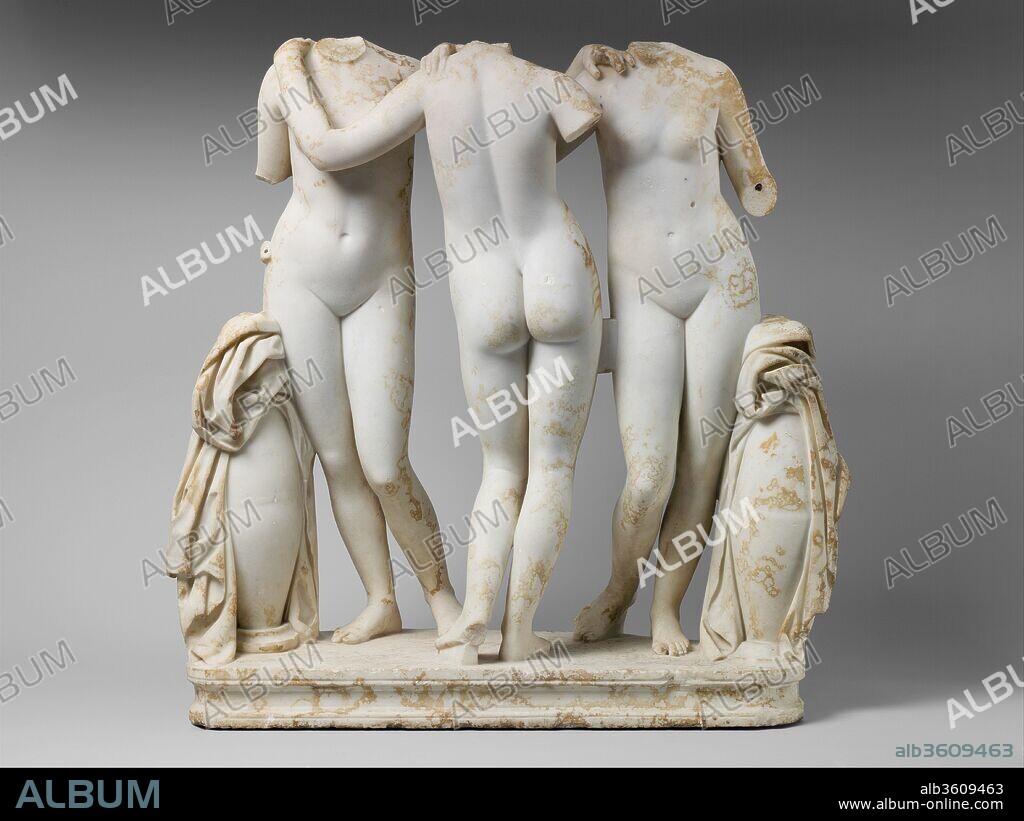alb3609463
Marble Statue Group of the Three Graces

|
Ajouter à une autre Lightbox |
|
Ajouter à une autre Lightbox |



Avez-vous déjà un compte? S'identifier
Vous n'avez pas de compte ? S'inscrire
Acheter cette image

Titre:
Marble Statue Group of the Three Graces
Légende:
Voir la traduction automatique
Marble Statue Group of the Three Graces. Culture: Roman. Dimensions: Overall: 48 7/16 x 39 3/8in. (123 x 100cm). Date: 2nd century A.D..
Roman copy of a Greek work of the 2nd century B.C.
These young girls, linked in a dance-like pose, represent The Three Graces: Aglaia (Beauty), Euphrosyne (Mirth), and Thalia (Abundance). They bestow what is most pleasurable and beneficent in nature and society: fertility and growth, beauty in the arts, harmonious reciprocity between men. They enjoyed venerable cults in Greece and Asia Minor. In mythology, they play an attendant role, gracing festivals and organizing dances. Their closest connection is with Aphrodite, whom they serve as handmaidens.
This carefully calculated, frieze-like composition is typical of classicizing art of the second and first centuries B.C. Instantly recognizable, it soon became the canonic formula for representing the Graces, who appeared in every medium and on every kind of object, from mirrors to sarcophagi.
Reportage:
Technique/matériel:
MARMOL
Période:
imperial
Musée:
Metropolitan Museum of Art, New York, USA
Emplacement:
ROMAN EMPIRE
Crédit:
Album / Metropolitan Museum of Art, NY
Autorisations:
Modèle: Non - Propriété: Non
Questions sur les droits?
Questions sur les droits?
Taille de l'image:
4282 x 3212 px | 39.3 MB
Taille d'impression:
36.3 x 27.2 cm | 14.3 x 10.7 in (300 dpi)
Mots clés:
 Pinterest
Pinterest Twitter
Twitter Facebook
Facebook Copier le lien
Copier le lien Email
Email
